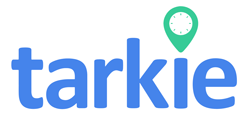Have you ever considered how much money businesses lose due to absenteeism? In 2022, U.S. companies lost around ₱12.8 trillion because of it. This highlights the importance of proper leave tracking.
In the Philippines, small and medium businesses are key to the economy. They need to track employee attendance well to stay productive. Using good attendance tracking systems helps reduce absenteeism and keeps employees engaged. This article will look at why absenteeism is a problem and how to solve it with leave monitoring systems.
Key Takeaways
- Excessive absenteeism can significantly impact organizational productivity and staff morale.
- Understanding the root causes of absenteeism is essential for effective management.
- Implementing a comprehensive attendance tracking system enhances accountability.
- Clear communication regarding attendance expectations is vital in reducing absenteeism.
- Regular reminders and well-defined policies can prevent misunderstandings related to attendance.
Understanding Employee Absenteeism
Employee absenteeism is a big problem for companies all over the world. It happens when workers often miss work without a good reason. Knowing about absenteeism helps businesses keep their teams working well and happy. A good system for tracking absences can help spot trends and improve how companies handle it.
Definition of Absenteeism
Absenteeism means when employees keep missing work without a valid excuse. It’s different from taking sick days or dealing with emergencies. It can really hurt how well a team works together. Companies need a way to handle it, like a system for managing absences.
Trends in Absenteeism Rates
Recent studies show that absenteeism rates are going up. About 30% of absences are due to illness or injury, which gets worse during cold and flu season. Mental health issues also cause 20% of absences. When stress is high, absences can jump by 50%.
The costs are huge, with businesses losing up to ₱226,000 a year for each employee. A good system for managing absences helps find patterns and act fast. By looking closely at attendance data, companies can find and fix the reasons for absences.
The Impact of Excessive Absenteeism on Businesses
Excessive absenteeism is a big problem for businesses in many fields. It’s important to understand its effects to find ways to control it. This helps keep operations running smoothly and ensures employees are happy and healthy.
When employees miss work often, it hurts productivity a lot. It also makes the work left for others harder and more stressful. Plus, it costs a lot of money.
Reduced Productivity and Efficiency
Productivity drops when people are absent a lot. Studies show that planned absences can cut productivity by 22.6%. Unplanned absences can cut it by as much as 36.6%.
In the U.S., about 2.8% of the workforce is absent often. This costs employers around ₱12.8 trillion each year. Using attendance monitoring can help find and fix these problems.
Increased Workload on Remaining Staff
When someone is out, their work falls on others. This makes their job harder and can make them unhappy. In places like schools and hospitals, where staff is key, more absences can really mess things up.
Using software to track who’s absent can help. It lets managers spread out work better and support staff when they’re busiest.
Financial Implications of High Absenteeism
Being absent costs more than just lost time. It also means paying the absent person and paying overtime to others. This adds up to a lot of money each year.
For hourly workers, it costs about ₱204,000 each year. For salaried workers, it’s around ₱150,000. This shows why controlling absenteeism is so important for a business’s health.

| Key Absenteeism Statistics | Value |
|---|---|
| Annual Cost to U.S. Economy | ₱4.76 trillion |
| Annual Cost to U.S. Employers | ₱12.8 trillion |
| Productivity Loss Range (Planned Absence) | 22.6% |
| Productivity Loss Range (Unplanned Absence) | 36.6% |
| Absenteeism Rate (U.S.) | 2.8% |
| Absenteeism Rate (EU Average) | 4.7% |
Common Causes of Employee Absenteeism
It’s important to know why employees miss work. Many things can cause them to be absent. This affects how well a workplace runs and its productivity.
Health Issues and Chronic Conditions
Health problems, like chronic conditions, make people miss more work. Diseases like diabetes and heart disease need ongoing care. This can make it hard for employees to keep up with work and health needs.
When medical needs are constant or unpredictable, taking time off becomes necessary. This creates a cycle where missing work is unavoidable.
Burnout and Job Disengagement
Burnout is a big problem in many jobs. It happens when work is too much, there’s no support, or no recognition. This makes employees feel disconnected from their job.
They might take unplanned days off. Burned-out workers might use tools to report their absences. But, they often lose the will to come back to work.
Work-Life Balance Challenges
Many struggle to balance work and personal life. This is true in fast-paced jobs that require constant availability. Family needs, long commutes, and too much work can lead to missing days.
Studies show that supporting a good work-life balance helps. It makes employees happier and less likely to miss work. Companies that focus on this can improve their employees’ happiness and reduce absences.
Implementing Effective Leave Monitoring
Creating a strong leave monitoring system is crucial for a responsible workplace. It helps track employee absences, giving insights into patterns. This knowledge lets managers enforce rules better and understand their team’s needs. A leave management platform makes tracking easier, keeping an eye on leave requests and balances.
The Importance of Attendance Tracking
Good attendance tracking has many benefits. It makes work smoother by handling leave tasks automatically. This saves HR time, cutting it by 30%.
It also lets managers spot and deal with frequent absences early. Companies using these systems see a 20% drop in absences. This is thanks to better tracking and analysis.
Types of Leave Tracking Systems Available
| System Type | Description | Benefits |
|---|---|---|
| Cloud-Based Solutions | Flexible systems accessible from various devices. | Increased efficiency and mobility, perfect for deskless teams. |
| Automated Platforms | Streamlined processes for leave requests and approvals. | Reduces admin work and boosts accuracy. |
| Self-Service Portals | Empowers employees to manage their own leave. | Increases morale by 15% through better engagement. |
| Biometric Systems | Uses fingerprint or facial recognition. | Reduces time theft and buddy punching, saving costs. |
| Analytics-Driven Solutions | Provides insights into attendance trends and patterns. | Improves resource use and boosts productivity by 15%. |

Each leave tracking system has its own strengths. Cloud-based systems are popular, expected to be 70% of the market by 2025. They’re scalable and cost-effective. Choosing the right tools is key to a productive workplace.
Developing an Absenteeism Policy
Creating an effective absenteeism policy is key for managing employee attendance. It helps reduce disruptions in the workplace. A clear policy sets the standards for acceptable attendance and explains what counts as a valid absence.
It also outlines the consequences of too much absenteeism. This clarity encourages staff to follow attendance rules and promotes accountability.
Creating Clear Attendance Expectations
Defining attendance expectations means outlining what types of absences are allowed. This includes absences due to illness or personal emergencies. The policy should also state the limits for scheduled and unscheduled leaves.
Using an absence management solution can make this process easier. It provides a clear framework for understanding attendance rules. This ensures everyone knows the rules, creating a culture of accountability.
Consequences for Excessive Absenteeism
Consequences for too much absenteeism should be clear and consistently applied. Many companies have a tiered system of disciplinary actions. This starts with a verbal warning after a certain number of absences.
Then, there are written reprimands, and if the problem continues, termination is possible. Employee attendance software helps track attendance accurately. This ensures consequences are applied fairly, reducing the costs of absenteeism.
These costs can be around ₱231,000 per full-time employee each year. A well-defined policy not only tackles attendance issues but also boosts employee morale. It clarifies expectations and promotes fairness in the workplace.
Utilizing Technology for Attendance Tracking
In today’s fast-paced world, technology is key for better attendance tracking. Employee attendance software makes it easy to monitor who’s in and who’s out. It keeps everyone updated on who’s working and who’s not.
This change helps manage absences well. It also gives deep insights into who’s showing up and who’s not.
Benefits of Automated Attendance Tracking Software
Automated attendance tracking software has many benefits. It makes payroll accurate by giving exact attendance data. This helps companies follow labor laws, like the Fair Labor Standards Act (FLSA).
It also cuts down on absences. This makes work run smoother and more efficiently.
- Increased Accuracy: Automated systems are less likely to make mistakes than manual methods.
- Time Efficiency: It saves time for everyone, making work easier.
- Reporting Capabilities: It can create detailed reports. These reports help make better decisions.
Integrating Leave Management Platforms
Linking leave management platforms with HR systems makes things better. It makes approving leave faster and easier. This improves how employees feel about their job.
Companies that track attendance well can help those who struggle. This boosts employee happiness and loyalty.
| Feature | Automated Attendance Tracking | Manual Attendance Tracking |
|---|---|---|
| Accuracy | High | Low |
| Time Consumption | Low | High |
| Real-Time Updates | Available | Not Available |
| Reporting Options | Extensive | Limited |
Creating a Supportive Work Environment
Creating a supportive work environment is key to reducing absenteeism and boosting employee engagement. When employees feel valued and can share their challenges, issues get solved early. Clear talks about attendance expectations help avoid misunderstandings that lead to no-shows.
Encouraging Open Communication
Open dialogue builds trust, which is essential for employee happiness. Regular meetings, like at 30, 60, or 90 days, help managers get feedback and talk about attendance. Also, offering resources for personal challenges makes the workplace better, leading to better attendance.
Implementing Wellness Programs
Wellness programs can greatly reduce absenteeism. Programs for mental health, stress management, and fitness improve well-being and health culture. Companies that focus on wellness see less absenteeism and a more productive team. Using employee attendance software helps track these programs’ success and aligns with engagement goals.
Monitoring and Analyzing Attendance Data
Managing employee attendance well means keeping a close eye on the data. This helps find trends in who’s missing work. It shows if there are bigger issues in the team. Using a system to track absences helps businesses learn and get better.
Identifying Patterns and Absenteeism Trends
Looking at attendance data shows when more people are off work. For example, after big events or holidays, many people miss work. In 2024, 16 million people missed work after the Super Bowl.
Knowing these patterns helps plan better for when lots of people are off. This is important during flu season or holidays. Keeping an eye on attendance helps manage better and lessens problems caused by people not showing up.
Adjusting Policies Based on Data Insights
Checking attendance data regularly helps make better policies. This makes sure rules are fair and work well. Using tools to report absences helps make choices based on facts.
For example, flexible work hours can be set for busy days. Celebrating when attendance gets better makes everyone feel good. It shows how important being reliable is.
Using software to track attendance makes things more accurate. It also helps with payroll and makes work more efficient. Adding analytics to attendance management makes strategies better and improves attendance over time.

Encouraging and Recognizing Good Attendance
To promote good attendance, a mix of strategies is needed. One key method is using attendance incentives. These rewards motivate employees to be on time and present. This helps build a culture that values reliability and attendance, which is key for a productive workplace.
Implementing Attendance Incentives
Attendance incentives are a strong tool against absenteeism. By rewarding employees for good attendance, companies can reduce tardiness and absences. Rewards can be extra vacation days, gift cards, or recognition in team meetings.
Such recognition boosts morale and encourages others to value attendance. It also helps in keeping the team dynamic positive. Companies that track attendance see better productivity, as everyone is available for important tasks.
The Role of Employee Recognition Programs
Employee recognition programs are crucial for a positive work atmosphere. Recognizing employees for their attendance boosts morale and helps keep top talent. A culture of appreciation leads to happier and more productive employees.
Tracking leave balances helps avoid year-end bottlenecks. It also lets management address attendance issues promptly. Regularly reviewing attendance data helps spot trends and support areas that need it. This keeps everyone focused on company goals.
Strategies for Preventing Excessive Absenteeism
To stop too much absenteeism, we need to be proactive. We should focus on being flexible and offering chances for growth. By doing this, we can make sure our employees are happy and involved in their jobs.
Flexible work options can really help with work-life balance. This leads to better attendance. Also, giving employees chances to grow professionally can make them happier at work. This helps control absenteeism too.
Flexible Work Arrangements
Flexible work is getting more popular. It lets employees set their own schedules. This can be remote work or a mix of home and office.
This flexibility helps employees manage their time better. It leads to a better balance between work and life. Studies show that flexible work can increase employee engagement by 75%. It also lowers burnout rates.
Providing Professional Development Opportunities
Investing in employee growth is key. When employees feel valued through training, they stay engaged. This connection between engagement and lower absenteeism is strong.
Research shows that companies with happy employees see a 78% drop in absences. Growth opportunities help both the employee and the company. They keep attendance steady.

| Strategy | Impact on Absenteeism | Example |
|---|---|---|
| Flexible Work Arrangements | Improved work-life balance, reduced absences | Remote working options |
| Professional Development | Increased engagement, decreased absenteeism | Training sessions and workshops |
| Wellness Programs | Average reduction of 25.3% in absenteeism | Health seminars and fitness challenges |
| Regular Feedback and Recognition | Enhanced motivation and job satisfaction | Employee-of-the-month awards |
These strategies help organizations tackle absenteeism head-on. Using employee attendance software can track patterns. This lets management tackle issues early.
By supporting employees with flexibility and growth, businesses can build a positive culture. This culture reduces absenteeism and boosts productivity and morale.
Conclusion
Dealing with too much absenteeism is key for a productive team, more so for small and medium businesses in the Philippines. Using automated systems for tracking attendance helps spot patterns. This is crucial for managing absences well.
Having a strong policy on absenteeism sets clear rules for attendance. It helps manage unexpected absences. It’s important to remember that too much absenteeism can make the rest of the team work too hard. This can lead to burnout and lower morale.
Using technology, talking openly, and supporting your team can really help cut down on absences. In short, focusing on good attendance tracking and a supportive work place is vital. It helps businesses create a positive work culture. This boosts both productivity and happiness among employees.
